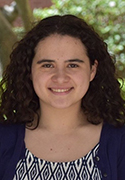Our trainees review webinars in their given fields and share abstracts to help colleagues outside their discipline make an informed choice about watching them. As our program bridges diverse disciplines, these abstracts are beneficial for our own group in helping one another gain key knowledge in each other’s fields. We are happy to share these here for anyone else who may find them helpful.
Making Sense of Glycosylation Using Novel Hydrophilic Interaction Liquid Chromatography Techniques
Matthew Lauber, PhD
Senior Principal Consulting Scientist, Waters Corporation
November 17, 2015
Hosted by Waters Corporation
Watch on the Waters website >>
This webinar gives a good overview of how glycan analysis is valuable both for improving our understanding of basic science and for innovation, including helping in the discovery of novel drugs. It specifically focuses on a workflow which can be done using one of the analytical techniques which I currently use in my research, called liquid chromatography (LC). The webinar specifically focuses on HILIC (hydrophilic interaction liquid chromatography), a type of LC which can provide a better separation for certain analyte molecules including glycans and glycopeptides. This webinar explains the basics of how HILIC works before explaining how it can be used for glycopeptide analysis, so I believe it will be useful to a wide audience (not just those who are already familiar with this technique).
This webinar covers how glycosylation is biologically relevant, which shows why it is an interesting topic to study. Glyosylation (the addition of glycans) of peptides can create many changes including how and where proteins bind and can therefore be very important in functions including cell-cell signaling and others.
Most of the webinar covers a sample preparation technique. Sample preparation is a necessary and very important step that must be done before LC. Therefore I would highly recommend this webinar for anyone hoping to use LC to characterize the glycosylation profile of their samples. I’d also recommend it for anyone who is interested in learning about how glycan analysis can be done, even if they are not planning to use this technique themselves. The technique described here works for both intact and digested glycoproteins: this is useful because it can show the monomeric composition of glycoproteins (which, along with their types of linkages which determine their structures, can be used to characterize glycans).
It’s also interesting to see an example of fluorescence detection being used in combination with mass spectrometry, especially because this sample type (glycans) are not ionized as easily by electrospray ionization (which is often used with mass spectrometry) as many other types of molecules. Acquiring data for both fluorescence detection and mass spectrometry, as shown here, can help to overcome this limitation.
During my external research experience this fall through the MBM program, I will be analyzing the glycosylation profiles of peptides involved in Alzheimer’s disease, which makes this webinar particularly interesting to me. I hope others will find it interesting as well.


